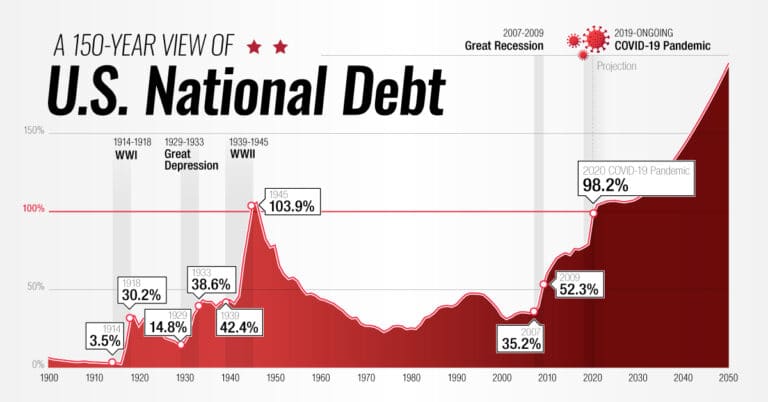
Russia’s invasion of Ukraine comes nowhere close
to justifying expanding the defense budget
well past its Cold War peak
William Hartung / The Quincy Institute for Responsible Statecraft
(March 28, 2022) — The Biden administration’s FY 2023 proposal for national defense, released on Monday, far exceeds what is needed to provide a robust defense of the United States and its allies. At $813 billion, it is substantially more — adjusted for inflation — than spending at the height of the Korean or Vietnam wars, and over $100 billion more than peak spending during the Cold War. The $800 billion-plus figure for national defense includes the Pentagon budget, work on nuclear warheads at the Department of Energy, and smaller defense-related outlays at a number of other federal agencies.
Even before today’s budget release, 40 Republican lawmakers, led by Rep. Mike Rogers (R-Ala.) and Sen. James Inhofe (R-Olla.) pledged to add money to Biden’s request, as happened last year, when Congress added $30 billion to the Pentagon’s original budget proposal. Although the lawmakers did not state a target number, industry analyst Byron Callan has suggested that they could be aiming for a figure for national defense as high as an astonishing $875 billion.
Naturally, the administration’s budget rollout focused on the Russian invasion of Ukraine as one of the rationales for increased spending. But the Ukraine crisis should not be used as an excuse to increase the Pentagon’s already enormous budget. The recent emergency supplemental for Ukraine included $6.5 billion in military support, less than one percent of the Pentagon’s total budget.

And so far, the Biden administration has sent a few thousand additional troops to Europe to reassure allies there, a tiny fraction of the total uniformed force of over 1.3 million troops worldwide, which includes over 470,000 Army personnel.
Compared to these numbers for the total force, a few thousand more troops sent to Europe should not be a major strain on the budget. There is no current need for a massive US troop increase in Europe that even approaches those Cold War levels, particularly given increases in spending by NATO allies like Germany and the greater ability for Europe to do more in its own defense. Thus, spending to address the Ukraine crisis can be more than readily accommodated under current Pentagon spending levels.
Moreover, the Pentagon budget is replete with examples of waste and dysfunction that must be addressed before going on a new spending spree. This includes dangerous or unworkable systems like the F-35 combat aircraft and the new intercontinental ballistic missile. As a recent analysis by the Project on Government Oversight has pointed out, the F-35 program is rife with performance and reliability problems, and may never be fully ready for combat.

In grudging recognition of all of its problems, the Pentagon will reportedly slow purchases of F-35s in the FY 2023 budget, to 61 from an originally projected total of 84. But it will take more than that to get the program on track, if that is even possible at this late date, over 20 years into its development and production.
As for the new ICBM, former Secretary of Defense William Perry has described these systems as “some of the most dangerous weapons in the world” because a president would have only matter of minutes to decide whether to launch them in a crisis, significantly increasing the risks of an accidental nuclear war based on a false alarm.
Despite this concern, the administration’s budget calls for an increase in spending on the new ICBM, part of a proposed three-decades long plan to build a new generation of nuclear-armed missiles, bombers, and submarines that could cost up to $2 trillion. Both the F-35 and the new ICBM should be phased out, or ideally eliminated altogether.
The Pentagon’s FY 2023 budget will be a boon to defense contractors, with a proposed $276 billion for weapons procurement and R&D combined, over $30 billion more than the department’s FY 2022 proposal. Much of that increase will go towards nuclear weapons and missile defense — a total of $68.8 billion for those two functions.
The cost of Northrop Grumman’s B-21 bomber will nearly double, from $2.7 billion in FY 2022 to over $5 billion in the FY 2023 request. The General Dynamics Columbia Class ballistic missile submarine will go from $4.5 brillion to $6.3 billion and the Northrop Grumman Ground-Based Strategic Deterrent — the new ICBM — from $2.6 billion to $3.6 billion.
In Fiscal Year 2020, the most recent year for which full statistics are available, the top five arms companies — Lockheed Martin, Boeing, Raytheon, General Dynamics, and Northrop Grumman — split over $150 billion in Pentagon contracts, more than one-third of all funding the Department of Defense provided to private firms in that budget cycle. This year’s request, if adopted, will drive those figures even higher.

As if the numbers requested for the Pentagon were not enough to create a surge in the bottom lines of major weapons makers, these firms can be counted on use their considerable lobbying muscle to press for more, working closely with their allies in Congress.
Likely areas of focus for congressional action will include increasing the numbers of F-35s purchased by the Air Force, Navy, and Marines and rolling back reported plans to retire ten Littoral Combat Ships, which at over $600 million each have had numerous maintenance and performance problems while lacking a clear mission.
The Pentagon budget is also padded as a result of the routine contractor practice of grossly overcharging the Pentagon for spare parts and the steep cost overruns on major systems, and there is room to cut tens of billions of dollars from the Pentagon budget without diminishing our security.
Perhaps the biggest source of overspending on national defense is rooted in the US “cover the globe” military strategy, which attempts to sustain the capability to go anywhere and fight any battle.
The United States maintains 750 overseas military bases and conducts counter-terror operations in at least 85 countries. Cutting back on this policy of global reach by reducing the US military presence in the greater Middle East and relying more on allies to provide for their own defense in Europe and East Asia would free up hundreds of billions of dollars in the years to come.
Resources saved through a more sensible defense strategy should be used to address existential security challenges like climate change and pandemics. It’s time to redefine security to prioritize the greatest risks to America and the world, while maintaining the capability for addressing traditional security challenges.
Posted in accordance with Title 17, Section 107, US Code, for noncommercial, educational purposes.